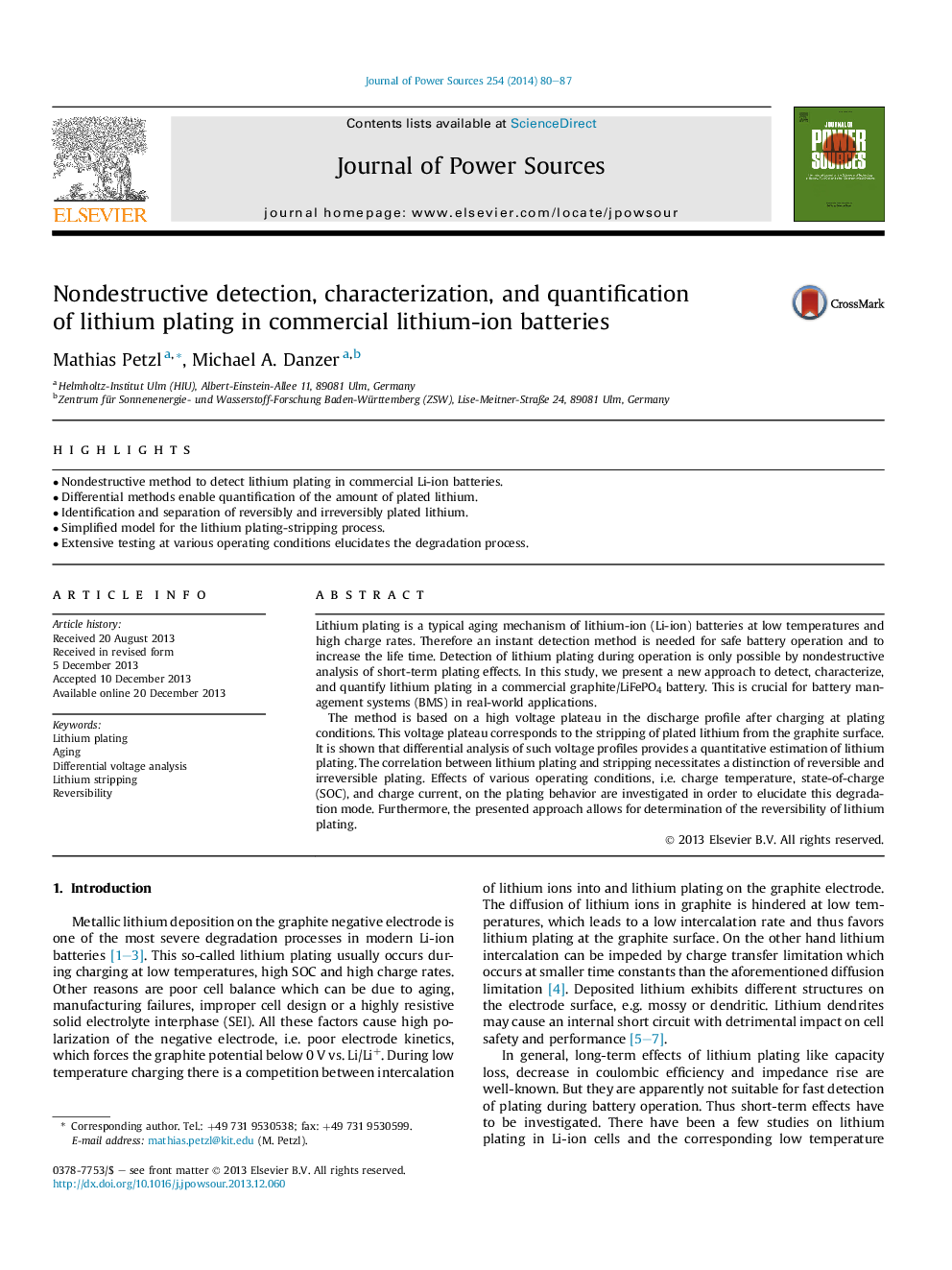| Article ID | Journal | Published Year | Pages | File Type |
|---|---|---|---|---|
| 7737536 | Journal of Power Sources | 2014 | 8 Pages |
Abstract
The method is based on a high voltage plateau in the discharge profile after charging at plating conditions. This voltage plateau corresponds to the stripping of plated lithium from the graphite surface. It is shown that differential analysis of such voltage profiles provides a quantitative estimation of lithium plating. The correlation between lithium plating and stripping necessitates a distinction of reversible and irreversible plating. Effects of various operating conditions, i.e. charge temperature, state-of-charge (SOC), and charge current, on the plating behavior are investigated in order to elucidate this degradation mode. Furthermore, the presented approach allows for determination of the reversibility of lithium plating.
Related Topics
Physical Sciences and Engineering
Chemistry
Electrochemistry
Authors
Mathias Petzl, Michael A. Danzer,
